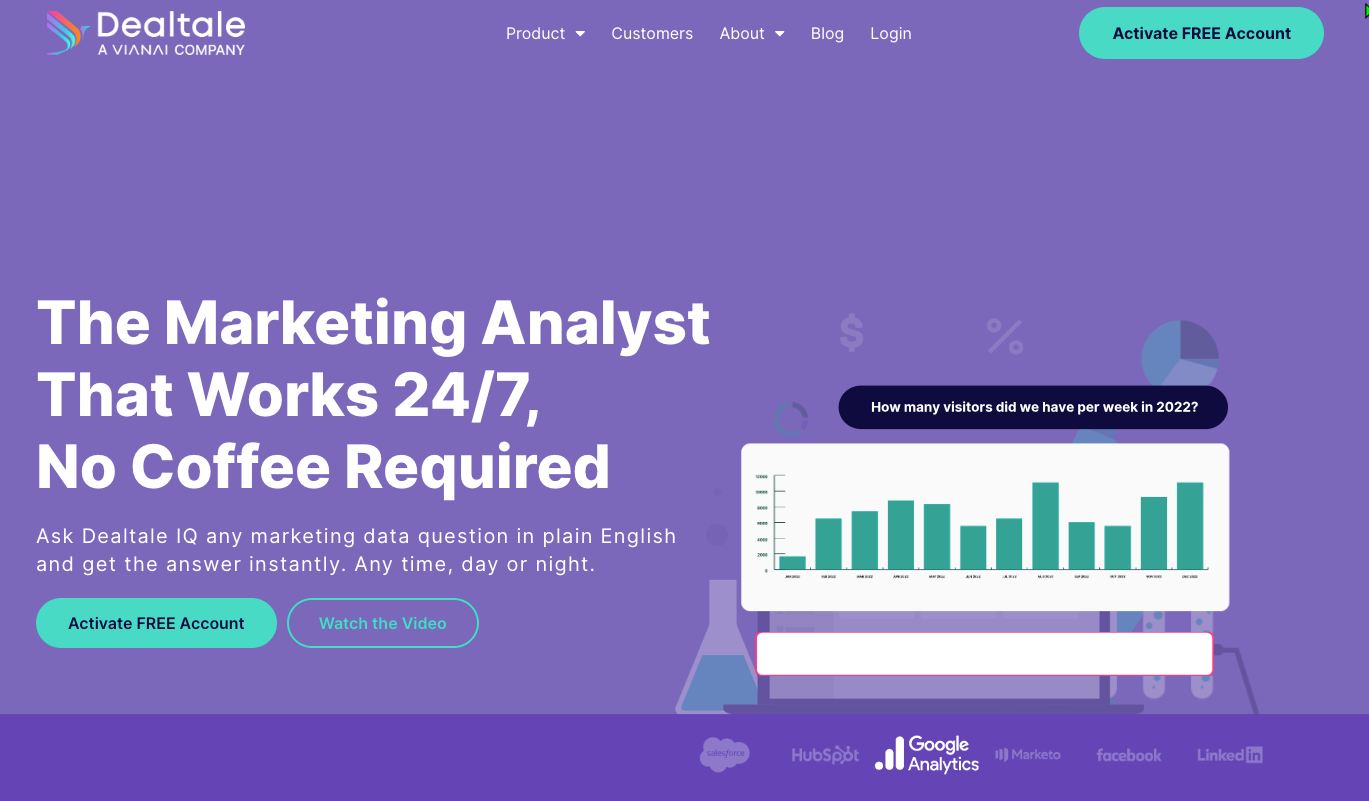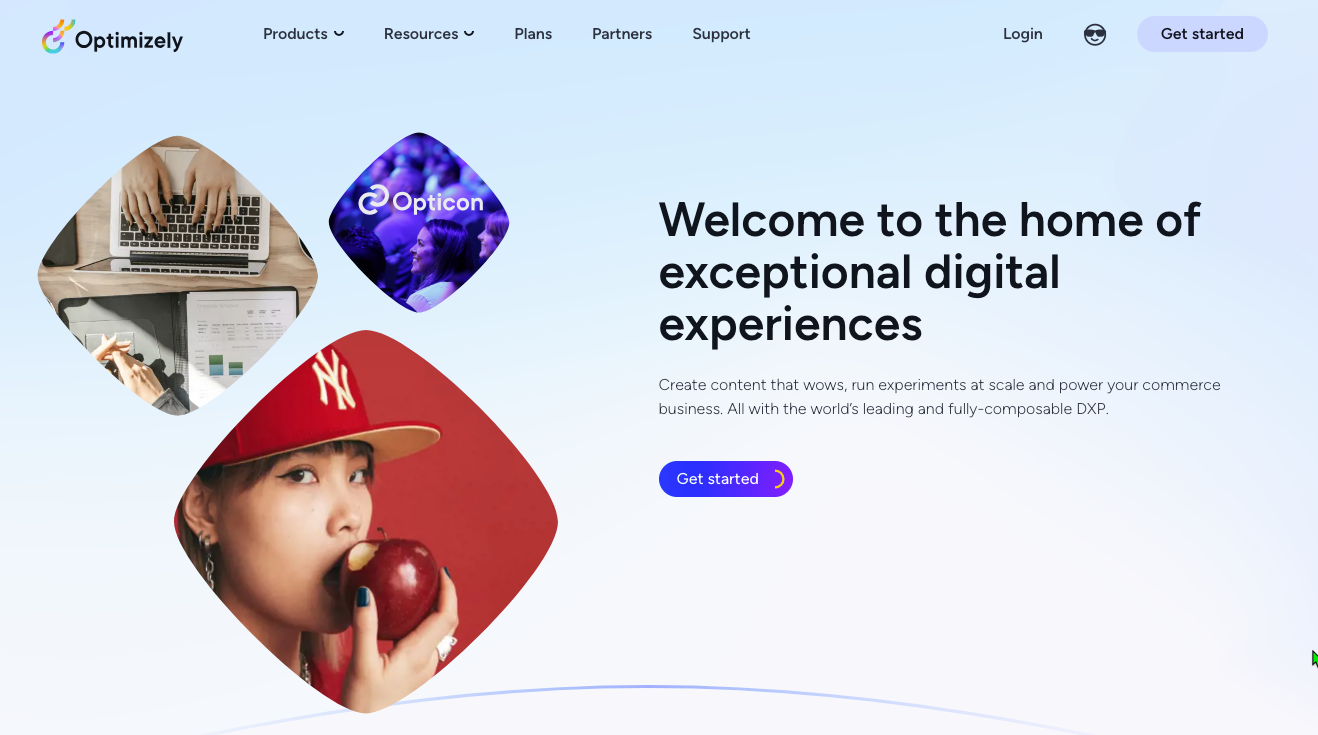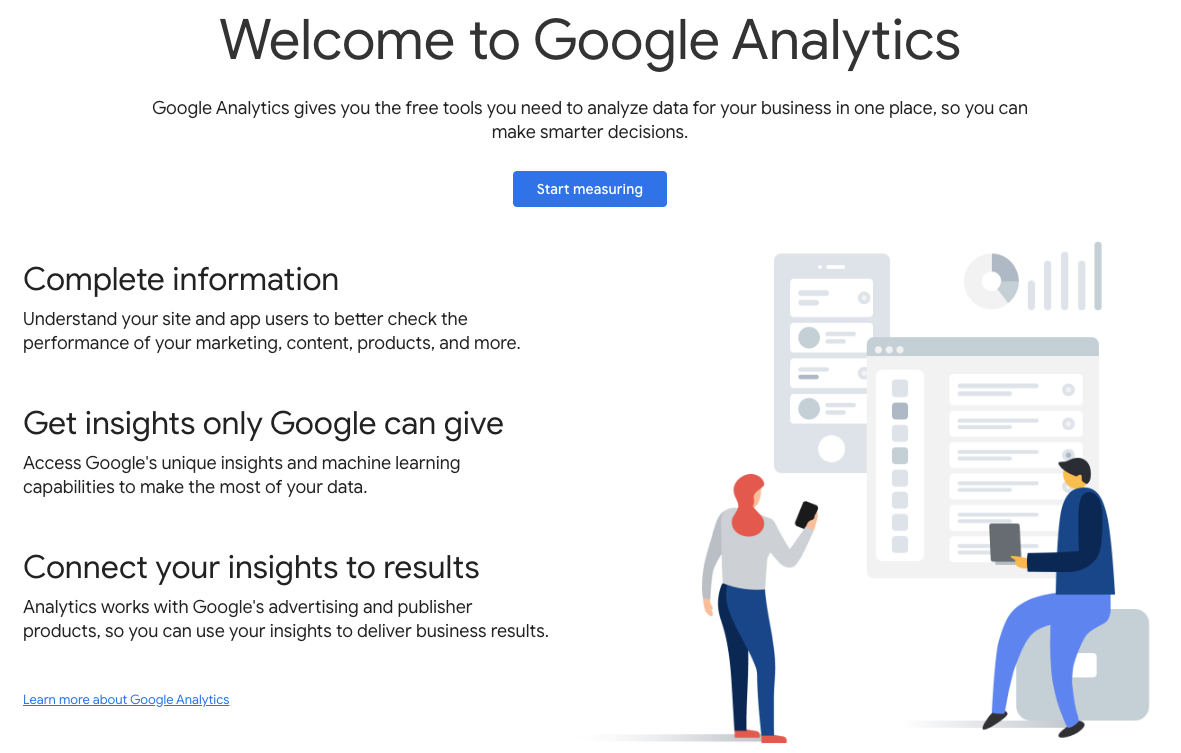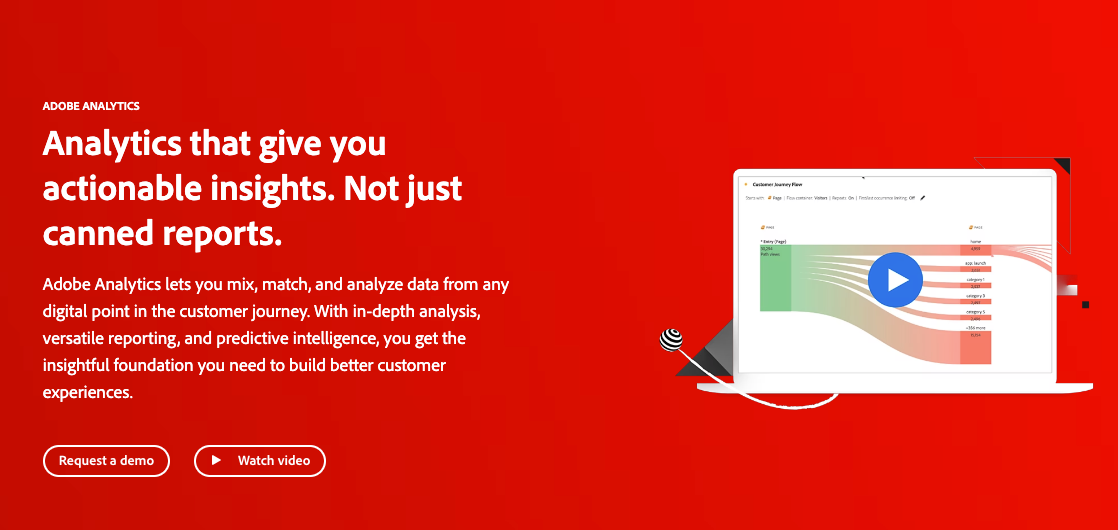Ever wonder how Netflix knows what shows to recommend? Or how Google Docs can finish your sentences?
The answer: AI, baby. Specifically, AI analytics.
Both Netflix and Google have collected boatloads of data from the millions of people using their products. Netflix keeps tabs on what you watch and how you rate it, then based on all the information it’s accumulated, it’s able to make predictive recommendations (usually darned good ones) on what it thinks you might like. Similarly, Google has watched how humans craft language—what you type and which words tend to go together. (Like “To whom it may concern” or “Actions speak louder than words.”)
Netflix and Google collect this data so they can make predictions about what you want next. (And to make sure you keep using their products). This can only be done by analyzing millions upon millions of datasets from previous users.

And that’s the point: AI’s ability to process so much data at incredible speeds makes a lot of today’s digital experiences possible. The more AI observes, the more it learns and improves.
The never-ending evolution of AI-driven analytics is revolutionizing how marketers (like you!) engage with their audience, optimize campaigns, and make data-driven decisions. By leveraging the sophisticated pattern recognition and predictive capabilities of AI, marketers can now anticipate customer behaviors, trends, and preferences with unprecedented accuracy. Neat, huh?
We’re gonna explain the who, what, when, where, and why of AI analytics in marketing. There’s a lot to cover here, so let’s dive right in:
- What is AI analytics?
- How is AI used in marketing?
- What are the benefits of AI analytics?
- What are the challenges of AI analytics?
- The best tools for AI marketing
- The future of data analytics
What is AI analytics?
AI analytics refers to the merging of artificial intelligence and machine learning techniques that analyze data, extract insights, and assist marketers in making data-informed decisions.
As marketers, we’re all familiar with the likes of Google Analytics. This traditional web analytics platform uses machine learning to amass data and present them to the marketer—but they’re nothing more than static visualizations or dashboards we’ve pre-selected, like daily visitors compared year-over-year or month-over-month.
When we talk about Artificial Intelligence in analytics, we’re talking about something that is more dynamic—something that can explain the “how” and “why” of our performance to help us make the best decisions. AI in analytics is all about the interpretation of the thing. It’s the scene at the end of Clue when Wadsworth runs around all the rooms explaining how and why the murders went down. Without Wadsworth, we’d all still be wondering whodunit? (“It was the CMO, in the boardroom, with the poorly-planned marketing strategy!”)
The best part about AI for analytics is that it never rests. It doesn’t take vacations or long walks on the beach. AI analytics tools constantly analyze data and evolve their outputs at extraordinary speeds, while humans are off doing… human-y things. But that doesn’t mean marketers don’t play a critical role in all this. In fact, AI still works best when paired with a flesh-n’-blood analyst who can double-check the work.
AI analytics is a helpful—nay, an essential companion for any marketer that wants to squash the competition by harnessing the power of data to gain valuable insights that drive business growth and innovation.
How is AI data analysis used in marketing?
AI data analysis can be a powerful tool for marketers to gain a better understanding of consumer behavior and preferences. There are different types of analytics, though: Predictive analytics use historical data to forecast future outcomes, while prescriptive analytics can take it a step further and encourage specific actions based on insights derived from the data.
You can thank predictive analytics for letting you know that cute little black dress sitting in your digital cart would look amazing with this thick belt… And look, it’s on sale! Prescriptive analytics help provide recommendations for the best hiking boots after you let the ‘Gram know you plan to hike the Appalachian Trail later this year. (Or as marketers like to call it, “retargeting.”)
By analyzing large data sets, Artificial Intelligence can identify patterns and trends about customer needs, preferences, and even habits. With this information in hand, marketers can create more targeted and effective marketing campaigns—like the hiking boots scenario.
Additionally, AI helps track campaign performance in real time. (No more waiting around for a specialist to interpret data.) Now you can quickly see what’s working and what’s not, then make adjustments to optimize for maximum impact.
In practice, an AI analytics tool can evaluate pages or campaigns and provide insights about how they’re performing, and then you—the marketer—can use the information to optimize your campaigns (assuming the AI doesn’t automatically optimize for you). Rinse and repeat.
What are the benefits of using AI analytics?
As a marketer, using AI analytics offers a ton of benefits. Most importantly, AI analytics tools can help you get a leg up in business and crush the competition.

Aside from satisfying your competitive side, AI-powered analytics can process vast amounts of data at a speed impossible for humans. And when you feel the need (“the need for speed“), AI analytics is your wingbot.
Let’s dig a little deeper into how Artificial Intelligence in data analysis can help you out:
Be more personalized
76% of respondents in a Zendesk report said they expect a certain level of personalization from the brands they interact with. When customers land on your website, they want you to already know what they want.
With machine learning, you can make it happen. The right data can help you tailor messaging, offers, and experiences, resulting in improved targeting, higher engagement rates, and happier customers.
This is where something like Smart Traffic comes into play. The AI identifies trends in your audience’s behavior, then automatically sends each person to the page variant where they’re most likely to convert. (It’s personalization, and it works!)
Be more data-driven
What used to take weeks, months, or years can now be accomplished in record time. Thanks to AI analytics, it’s easier to make informed decisions based on real-time data rather than relying solely on intuition or stale numbers. When things change fast, even three-day-old data can be too old.
By analyzing vast amounts of information and extracting valuable insights, AI helps you identify trends, understand customer behavior, and optimize strategies accordingly for maximum business success.
Be more efficient
Comparing a machine’s speed and stamina to a human would be like watching a cheetah take on a sloth in a 100-meter dash. Or like that one time I walked up the CN Tower for charity and it took me… ah, a loooong time. Meanwhile, the firefighters in full gear—including oxygen tanks—sped right past me, and looked as fresh as they do in the calendars. (*Gulp.*)
Sorry, what were we talking about? Oh yeah. Efficiency of AI in analytics.
So, AI-powered tools can generate reports, perform data analysis, and provide actionable insights at speeds most humans can’t even fathom, improving productivity and freeing up time to focus on higher-value activities.
What are the challenges of using AI analytics?
In the fall of 2022, ChatGPT was a mere whisper—and just a few months later, thousands of marketers were quaking in their home offices, stressing about losing their jobs to bots. But while AI has enhanced the marketing landscape, it ain’t all sunshine and rainbows. There are some challenges that come with using it.
Impersonality
Put a finger down if you’ve recently yelled at a phone bot for giving you the runaround when you just wanted to speak to a human. This is an example of how AI can help a company save money—while simultaneously alienating its customers.
When engaging AI analytics, the customer experience should always come first—especially if your goal is to improve brand loyalty and increase trust. (Hint: This should be your goal). As an experienced marketer, you know marketing involves building relationships and fostering emotional connections with customers. The good news is that AI doesn’t (yet) have the cognizant ability to do this without the aid of humans.
Algorithmic bias
Because they’re trained on historical data, AI algorithms can unintentionally contain biases and reflect existing societal or cultural prejudices. These biases can result from things like poor training of the machine learning systems or faulty data sets.
Regardless of where they come from, if left unchecked, AI analytics can perpetuate these biases, leading to discriminatory outcomes or unfair targeting.
On data bias, John MacCormick, professor of computer science at Dickinson College (who accidentally built a racially-biased AI algorithm in 1998), said:
…Even in 2023, fairness can still be the victim of competitive pressures in academia and industry. The flawed Bard and Bing chatbots from Google and Microsoft are recent evidence of this grim reality. The commercial necessity of building market share led to the premature release of these systems.
The systems suffer from exactly the same problems as my 1998 head tracker. Their training data is biased. They are designed by an unrepresentative group. They face the mathematical impossibility of treating all categories equally. They must somehow trade accuracy for fairness. And their biases are hiding behind millions of inscrutable numerical parameters.
The marketing lesson here? Be wary of where your AI gets its data. Is it fair and unbiased, or is it narrow in scope? Humans have a tendency to bring their biases with ’em, even when constructing machines.
The best way to mitigate these bias risks is to find out where and when the AI has collected data. You might be aware that ChatGPT 4.0 is only trained on data up to 2021. And, uh, so much has happened since then. As marketers, if you’re going to integrate AI analytics into your plans, remember that not all AI is created equal.
Poor ethics
AI analytics are wicked smaht (said in my best Good Will Hunting accent), but they operate on predefined algorithms and training data. This means AI can unknowingly make unethical and irresponsible decisions—like writing fake reviews or pretending to be people online.

Of course, there’s the argument that ethics are difficult to define—but if you don’t want machines making ethical decisions for your brand (which, no!), then humans are still required to validate what AI analytics alone might overlook.
In short, don’t fire your marketing team.
Human expertise and experience are still essential in interpreting the insights generated by AI analytics and making decisions that prioritize the well-being and privacy of customers.
Lack of context
Trends change quickly (like during 2021 to 2023, for instance). One day we’re wearing wide-legged jeans, then skinnies all the way—only to wake up one day to the news that skinnies are out and wide legs are back in. (Just waiting for the bell bottoms in my closet to be the hot trend again.)
Although AI never sleeps, it may need help to fully comprehend complex market dynamics, cultural nuances, or rapidly-changing trends like the fickle fashionistas in charge of women’s jeans (#biggerpocketsplease).
We still need people to interpret data, add contextual understanding, and give it that human touch. For example, your AI can tell you there was a drop in MoM site visitors from July 1-5, but it probably won’t recognize that’s the period between Canada Day and Independence Day. As the human eyes, you know it’s probably just folks taking a long weekend—because when you look at the YoY analytics, it happens every year.
Best tools for AI marketing analytics
Since you’re a marketer and not a data scientist (… unless you are?), we’ve rounded up some of the best AI marketing tools to help you crush your goals (and the competition) along the way.
Dealtale

Dealtale offers users an interface that lets you prompt the platform for the data you want, not unlike ChatGPT. It’s perfect for those of us who aren’t super data-savvy. The central dashboard lets you view all your metrics from multiple marketing tools in one convenient login, and you can track sales and create personalized marketing campaigns without ever leaving the platform. With Dealtale, you don’t need to be tech-savvy—and if you reach any sticky points, their customer service is ready and waiting to help.
(To hear more from Dealtale, check out this episode of the Unprompted podcast where Dealtale’s Head of Marketing, Molly St. Louis, offers insights and predictions on the future of AI marketing.)
Key features:
- Machine learning and prescriptive analytics to build the ultimate customer journey with customized communication
- A built-in IQ tool transcribes the data in plain language to help you understand what you’re looking at without getting a Ph.D. in geek
Pricing: Custom, but they offer a two-week free trial
Optimizely

Don’t know a lick of code but want to run A/B tests and capitalize on web visitor personalization? Optimizely can help you deliver the ultimate user experience by offering website change suggestions backed by data and providing visitors with hyper-personalized product recommendations.
Key features:
- Uses multivariate testing that allows businesses to test multiple variations of different elements simultaneously and identify the most effective combination
- Allows businesses to segment their audience based on various criteria, such as demographics, browsing behavior, and purchase history, to deliver a targeted customer experience
- Enhances engagement and conversions with mobile app optimization
Pricing: Custom
Google Analytics

Google Analytics is the most recognizable AI analytics tool, used by millions of businesses around the world. The new, beefed-up version of Google Analytics (GA4) promises to offer better cross-platform tracking and improved reporting to understand customer behavior.
Key features:
- Traffic and conversion reporting across multiple search engines shows where your marketing efforts are most profitable
- Offers in-depth insights about who your website visitors are, where they come from, and how they interact with your product
- Integrates with Google Ads so you can track customer engagement from their first interaction to where they dropped off or converted
Pricing: Free
Adobe Analytics

Considered one of the best AI data analytic tools available to marketers, Adobe Analytics offers the most in-depth insights to generate more traffic, provide an unforgettable customer experience, and increase profits.
Key features:
- Machine learning and a proprietary “segmentation IQ” allow you to quickly identify the most profitable segments to reach your goals better
- Provides multi-channel integration and data collection so you never miss an opportunity to gather information about the customer journey
- Visually track data collection in real time from your live-traffic dashboard
Pricing: Custom
The future of data analytics
As AI continues to advance, it will play an increasingly vital role in how marketers approach their jobs. AI algorithms will get faster and more efficient, and real-time analytics will become standard practice in marketing. As with any marketing tool, this can be good or bad, based on how you use it. For example, when done well, email marketing helps increase sales—but when used to spam, it does more harm than good.
However, armed with data-driven insights, businesses can run more targeted and tailored marketing messages, offers, and recommendations at scale.
In an article for IBM, Tom Kershaw, Chief Product and Technology Officer of Travelport said:
AI is so important because it lets us scale the internet. It lets even a small publisher or a regional app have access to the same intelligence, the same creativity as a super large behemoth and that is a critical function to the way the internet works and the way society works.
Christine Crandell, AI consultant and journalist, suggests that AI analytics is to marketing what Goose is (was) to Maverick. (Yes, that’s another Top Gun reference. Did you catch the first one?) Your Robo-Goose, if you will.
Marketers will need to prepare for AI and carry forward the lessons learned from predictive analytics and today’s patchwork of martech solutions—automation can only offer recommendations that are as good as the underlying data sources. In the end, the human is still the pilot.
The final verdict on AI analytics in marketing
AI isn’t going away. By leveraging the power of AI data analytics responsibly and ethically, marketers can unlock new opportunities to create more meaningful experiences for their customers.
The bottom line is that the future of AI analytics in marketing is promising for businesses willing to embrace it, use it as a means to identify performance insights, and continue to place the user experience at the core of their marketing strategies.
